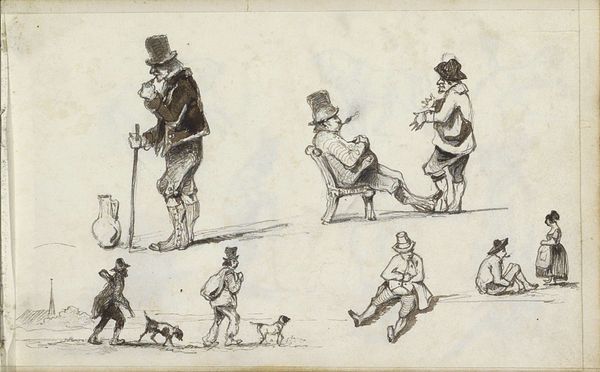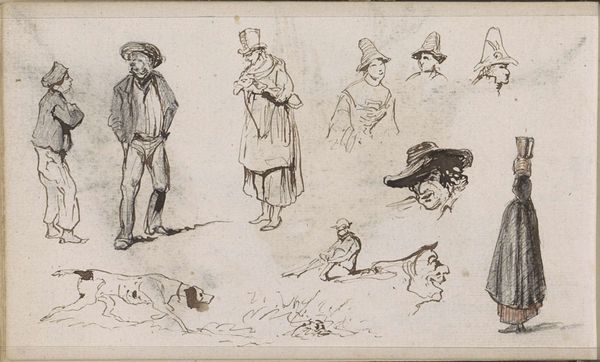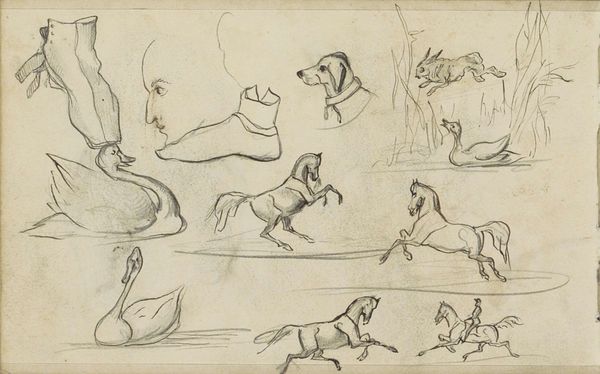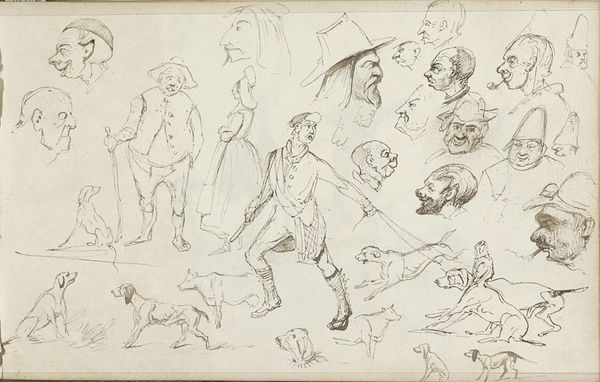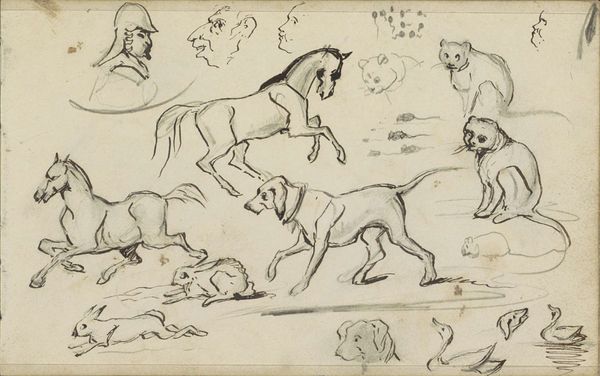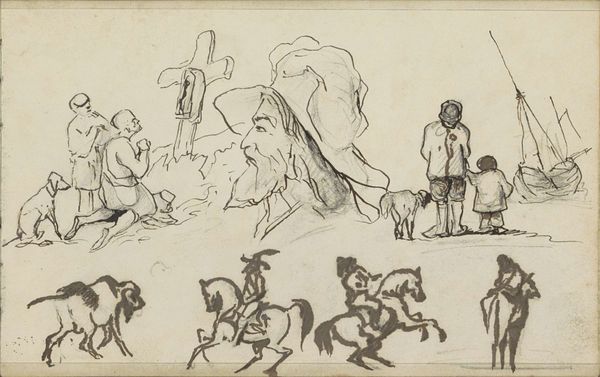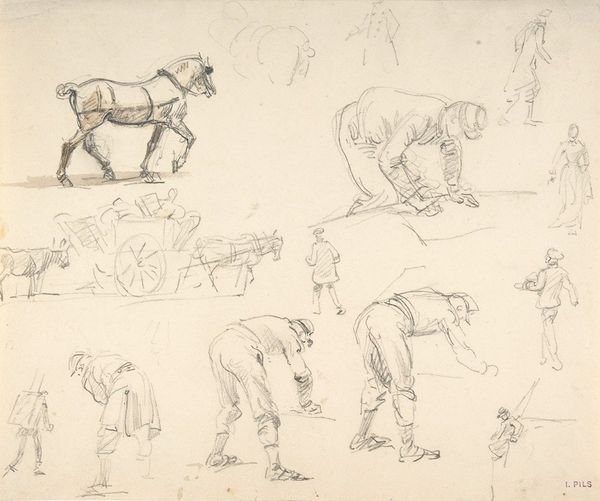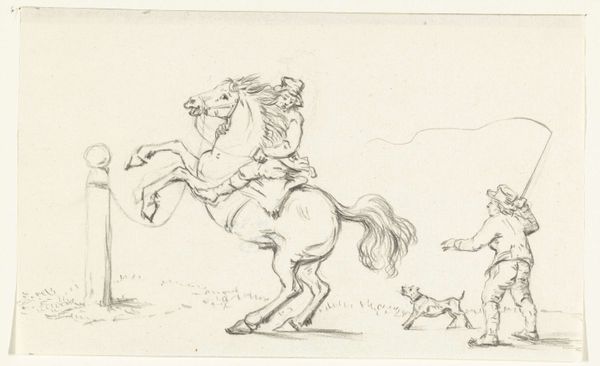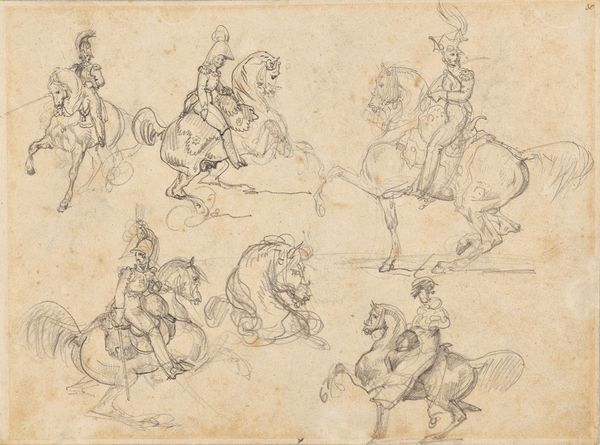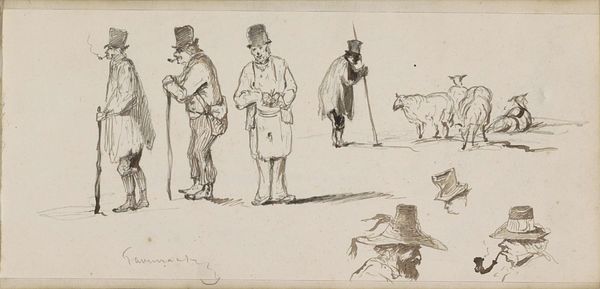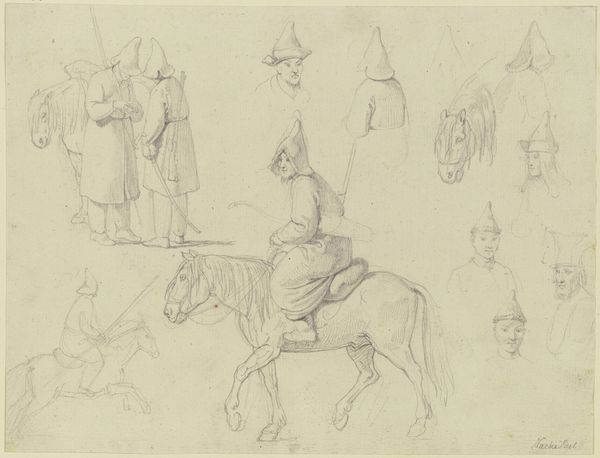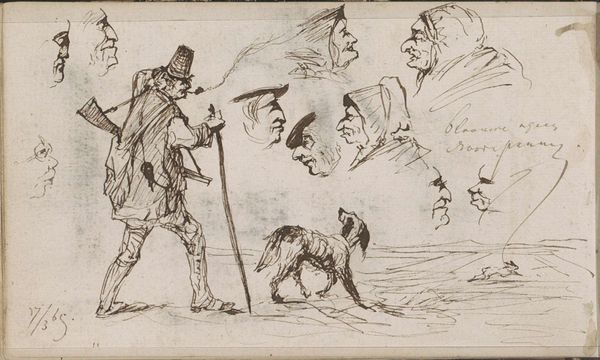
drawing, paper, pencil
#
portrait
#
drawing
#
landscape
#
paper
#
romanticism
#
pencil
#
genre-painting
#
realism
Copyright: Rijks Museum: Open Domain
Editor: Here we have "Jager, (trek)paarden en mannen met wandelstokken" a pencil drawing on paper by Johannes Tavenraat, dating back to 1843-1844. The sheet is filled with loosely rendered figures, both people and horses. It's hard to pinpoint a clear subject. What can you tell me about this work? Curator: It's fascinating to see a sketch like this – it allows us a glimpse into the artist's process. Tavenraat, working in a period defined by Romanticism and early Realism, seems to be grappling with representing different social classes and their relationship to the natural world. Notice the contrast between the figures of the hunters with their guns and the men with walking sticks, likely representing leisure or a different kind of engagement with the landscape. What power dynamics do you think are at play here? Editor: I guess the hunters would have had the power and the freedom, and their dress also points at more money. And in comparison to the walking men... there is something slightly satirical about the way the standing man has been depicted... Do you see a connection to genre painting? Curator: Precisely! Genre painting often depicted scenes of everyday life, but it also subtly commented on social mores. Tavenraat gives us hints – are those caricatures of the bourgeoisie? Is he exploring themes of land ownership and leisure? This drawing opens up many avenues to investigate the relationship between humans, animals, and the landscape within a specific historical context. Editor: I see what you mean, the drawing can be interpreted as a social commentary of its time. So looking at the sketch beyond its surface, is what is interesting about it! Curator: Absolutely, by looking at the historical and cultural background of the artist, the materials used and what’s on the paper helps us contextualize and gain new insights. Thank you for that.
Comments
No comments
Be the first to comment and join the conversation on the ultimate creative platform.
